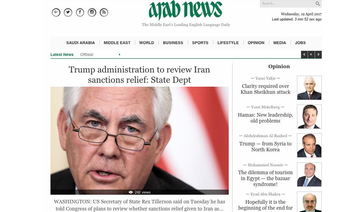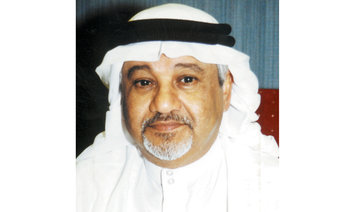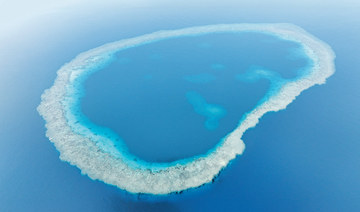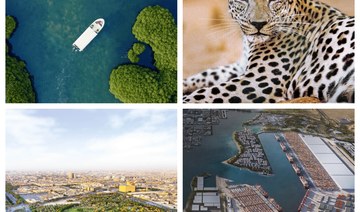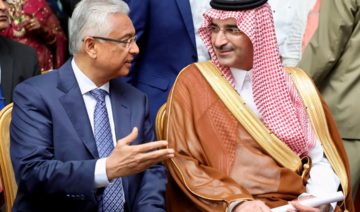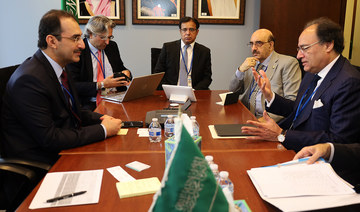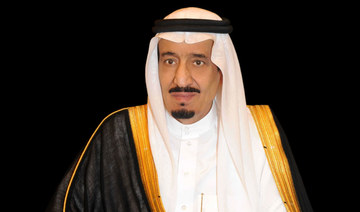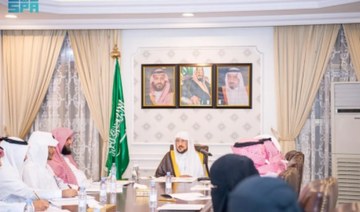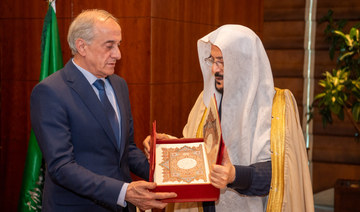On this day in 1975, Arab News was launched to provide Saudi Arabia-based readers with breaking news and informed analysis of events in the Kingdom and around the world.
Then, in 2001, the familiar green broadsheet was joined by a website, marking Arab News’ first foray into digital journalism.
To mark 42 years as one of the country’s leading English-language dailies, we sat down with Arkan Aladnani, Mahad Mohamed and Romulo Tangbawan of Arab News Online, to understand where the newspaper’s digital platform is headed and why it is so important.
Q: Arab News has already embraced change with its substantial digital offering — but does it plan to become more Internet-focused?
A: Many years ago, the battle of print versus the airwaves ended, and neither won the race. A new battle of the digital news era has begun — and across the world, news organizations are facing the same exciting challenges that we at Arab News are overcoming every day.
Fueling this battle is the rise of connected devices, such as smartphones, with which many now consume the news. The planet has gone digital and this is especially evident in Saudi Arabia, where smartphone penetration rates are extremely high.
Therefore, digital publishing and related social-media platforms of any news organization are key to success. Embracing this evolution allowed us to be at the fingertips of millions of people around the globe, bypassing geography and time zones to access a whole new base of readers.
We are able to reach our audience with news headlines and breaking news alerts so they don’t miss a beat when it comes to current affairs. Our online team is growing and that is a direct reflection of what our audience is demanding. We understand that it is the future and we are confident in forging a path in the right direction.
Q: Does online journalism pose different challenges to those faced in print journalism?
A: To be heard clearly is an issue for all in the crowded online space. However, by sharing quality news and being consistent, we are overcoming this obstacle.
Another obvious challenge is speed. There needs to be an increasingly narrow time gap between a story breaking and posting it online. We don’t have the luxury of working toward a singular, late-night print deadline and we are required to operate 24 hours a day.
Another pressing issue is related to the verification of content circulating online, particularly on social media. It is sometimes very difficult to ascertain when a video was taken and if a poster’s claim is accurate. Of course, this last point, along with the proliferation of fake news, is something the whole industry is grappling with and is not limited to online journalism. However, journalists in the digital sphere must be over-cautious and diligent as the need for speed can lead to erroneous stories spreading like wildfire.
Q: Arab News is gaining social media followers by the minute and has 5 million followers on Facebook. How did you manage to build up such a large online following and what were the challenges involved?
A: Firstly, having 5 million loyal and engaging fans from across the world is a great honor and something we are really proud of. Secondly, we believe that our emphasis on quality and accuracy, and being consistent in sharing interesting and newsworthy content, has garnered us such a loyal following.
Our followers are counting on us to provide them with their daily dose of news. We listen to them and learn from them and we engage with them every minute of the day.
Keeping this huge fan base informed requires time and effort, especially as we cover the news 24/7. We are up for the challenge and realize that our efforts are being rewarded every day as more and more people choose to find out what is happening in the world via our platform.
Q: Arab News is active on Twitter, Facebook and Instagram but which platform do you believe is the most effective?
A: Considering the different demographic of each platform, we would say that every platform is effective in its own way.
When we post, we do so with the audience in mind. A post on Twitter — where we are followed by a number of official governmental accounts, leaders and other political influencers — will be different from posts we share on Facebook and Instagram, where we can be more creative and engaging.
If we are talking about the sheer number of followers, then clearly our Facebook and Instagram accounts are the most successful channels we have on social media. We are proud to say we outdo many competitors in the Middle East in terms of our followers on these platforms.
Q: Arab News traditionally had a readership base comprising diplomats and business-focused readers. Has the online platform changed this?
A: For sure, while these readers have always found Arab News useful in understanding the Kingdom of Saudi Arabia and the wider region, the website and social media platforms have earned us a new base of fans.
With more than 100,000 Twitter followers, we are followed by international corporations, celebrities, sport personalities, governments from all around the world, as well as influencers and international users interested in a wide variety of content.
What is next for Arab News and digital journalism
What is next for Arab News and digital journalism

How forest conservation is helping Saudi Arabia achieve its green objectives

- By planting trees and protecting forests, the Kingdom promotes biodiversity and sustainable development
- Forests provide habitats for hundreds of animal species and play a pivotal role in combating climate change
JEDDAH: With its low annual rainfall, much of Saudi Arabia’s vast landscape is covered by desert, broken by occasional oases. In its mountainous regions, valleys, and along its coastline, however, the Kingdom is home to multiple forest ecosystems.
Forests play a pivotal role in combating climate change by acting as carbon sinks — storing carbon both above and below ground, thereby extracting it from the atmosphere, where it would otherwise contribute to the greenhouse effect.
Their significance in climate change adaptation and mitigation is also underscored by their role in creating local microclimates, providing habitats for a wealth of biodiversity, locking in freshwater resources, and preventing flash floods, landslides, and soil degradation.
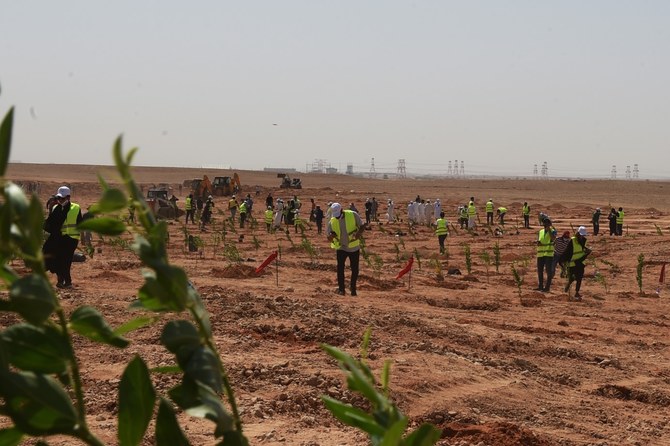
Saudi Arabia’s National Center for Vegetation Cover Development and Combating Desertification is at the forefront of implementing the Kingdom’s strategic goals outlined in Vision 2030.
“Forests play a crucial role in mitigating climate change,” Samir Malaika, assistant director-general of the general administration of forests at NCVC told Arab News. “Saudi Arabia’s dry climate and geography hinder its efforts to conserve forests and promote plant growth.
“With most areas receiving minimal rainfall, forests struggle to thrive. The escalating impact of climate change exacerbates environmental stressors, hampering forest growth and regeneration efforts.”
The NCVC aims to elevate living standards by reducing pollution and facilitating the restoration of degraded environments. It is also committed to building resilience against natural hazards and defenses against harmful pests that could pose risks to vegetation.
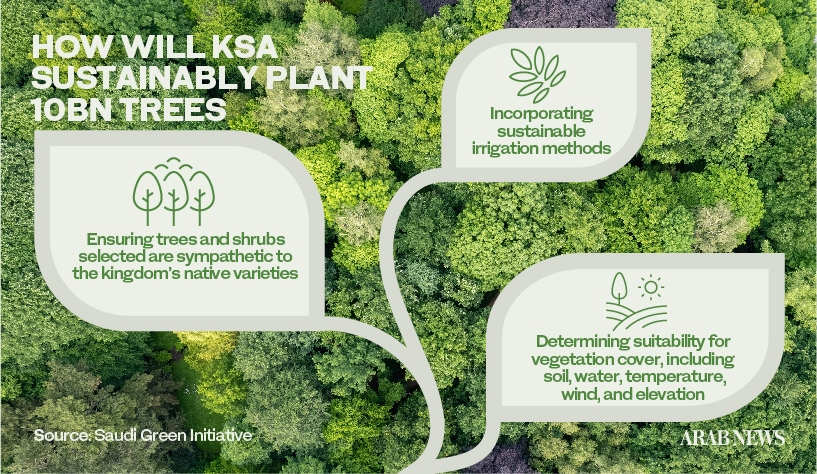
Simultaneously, it prioritizes the sustainable development of the Kingdom’s natural resources. With seven ongoing initiatives, it aims to ensure the responsible and lasting utilization of resources in line with the nation’s sustainability objectives.
Among the center’s key initiatives under the Saudi Green Initiative is a scheme to plant some 10 billion trees — representing a significant step in the Kingdom’s reforestation effort.
The initiative for forest management and sustainable development by 2030 underscores a long-term commitment to nurturing and preserving woodland environments.
The phased approach to preserving and restoring vegetation in pasture areas reflects a strategic focus on addressing the specific ecological challenges faced by different ecosystems.
Opinion
This section contains relevant reference points, placed in (Opinion field)
Furthermore, the initiative for developing vegetation and infrastructure for 50 national parks highlights the importance of creating protected natural spaces while promoting biodiversity and ecotourism.
Moreover, the initiative to plant 7 million wild trees in royal reserves demonstrates a targeted effort to enhance the natural habitats within these pristine areas.
Engagement by the public and private sectors in vegetation development and combating desertification underscores the collaborative approach needed in order to achieve sustainable environmental goals.

By harnessing the collective resources and expertise of various stakeholders, these initiatives aim to create a resilient and thriving ecosystem that benefits both present and future generations.
According to Malaika, Saudi Arabia boasts a forest coverage spanning approximately 2,768,050 hectares, primarily concentrated in the southern and southwestern regions, along riverbeds, and on the coastlines of the Red Sea and the Arabian Gulf.
These forest ecosystems are categorized into three primary types: mountain, valley, and mangrove.
Mountain forests
Mountain forests are predominantly located in the region spanning the Hijaz Mountains in Taif to Jazan in the south. These areas have neutral soil acidity and receive the highest rainfall and humidity levels, particularly evident in the southwest with denser forest cover.
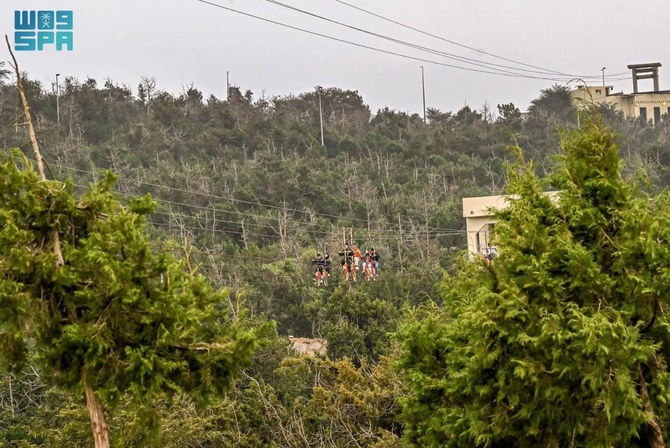
Forests are made up of several Juniperus plant species, typically found at altitudes of 2,000 meters and above. Additionally, Olea chrysophylla forests, characterized by wild olive trees with golden leaves, thrive at altitudes of 1,500 to 2,000 meters.
At lower altitudes, between 1,000 to 1,500 meters, Acacia plant species dominate the landscape.
Notably, terraced agriculture is a common feature of mountainous regions, facilitating crop fruit tree cultivation while aiding in water retention and soil protection. However, improper management can lead to land degradation, adversely affecting the surrounding forests.
DID YOUKNOW?
• Saudi Arabia is home to more than 63 unique ecosystems, ranging from mountainous regions to coastal lowlands.
• The Kingdom boasts a diverse array of wildlife, including 78 terrestrial mammal species and 499 species of bird.
• Coral reefs in Saudi Arabian waters host an impressive 266 species, contributing to marine biodiversity.
• With more than 6,500 species, Saudi Arabia’s invertebrate population testifies to the richness of its ecosystems.
• Saudi Arabia boasts three distinct forest ecosystems: mountain forest, valley forest, and mangrove forest.
Valley forests
Saudi Arabia’s topography features 179 valleys distributed across the country. Valley forests, mainly situated in semi-arid regions, are characterized by species such as Acacia ehrenbergiana, Acacia tortilis, Maerua crassifolia, several species of Commiphora, and Salvadora persica.
Additionally, oases and valleys are abundant with various Acacia species, Ziziphus spina-christi, Salvadora persica, Haloxylon persicum, trees, shrubs, and Hyphaene thebaica.
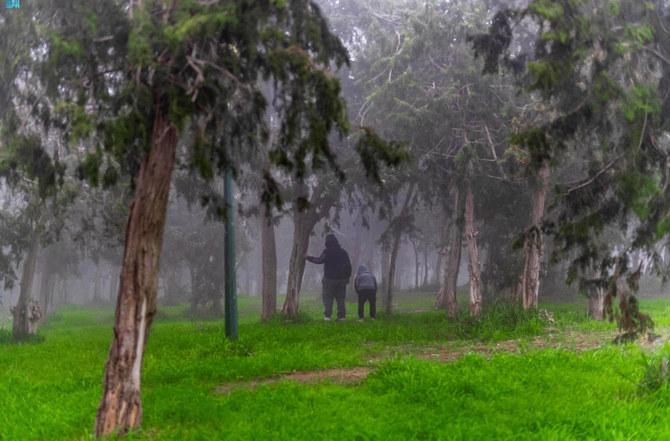
Mangrove forests
Mangroves and coastal ecosystems tolerant to saltwater are predominantly located along the Red Sea coast, with other stretches found along the Arabian Gulf coast.
Despite the lack of comprehensive forest data, studies indicate significant degradation of the mangrove ecosystem.
Avicennia marina is the most prevalent species in mangrove forests, with Rhizophora mucronata being less common.

Besides these natural forests, the Kingdom is also host to many urban and cultivated woodlands in its parks and residential neighborhoods, planted to provide shade, reduce temperatures, and beautify city streets.
Despite the Kingdom’s diverse ecosystems, it faces significant challenges in preserving and expanding its forests, including limited resources, poor local management, insufficient nursery production to meet seedling demand, a lack of awareness about dumping and unauthorized grazing, and other irresponsible human activities.
The Saudi National Center for Wildlife is working to protect, develop, and restore ecosystems and biodiversity around the Kingdom, in addition to addressing risks related to plant and animal life.
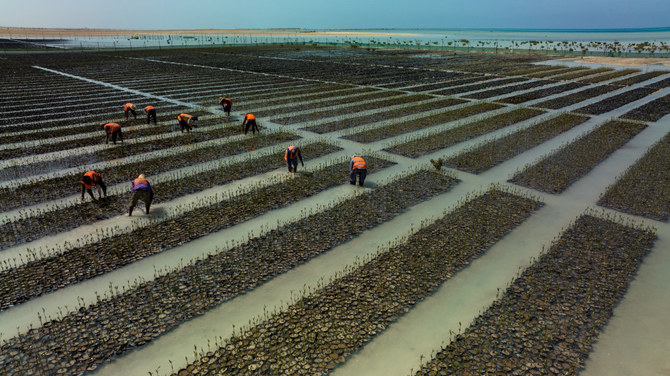
According to Abdulmanea Al-Qahtani, invertebrates department director at the NCW, the Kingdom has 63 distinct ecosystems, encompassing a diverse range of landscapes, including mountains, plains, deserts, valleys, forests, seas, wetlands, plateaus, coastal areas, and marshes, all teeming with biodiversity.
The Kingdom is home to 78 species of terrestrial mammal, 499 species of bird, 136 species of reptile, seven species of amphibian, and more than 6,500 species of invertebrate.
In its waters, the Kingdom also offers habitats to 19 species of marine mammal, eight species of freshwater fish, 1,248 species of saltwater fish, and 266 species of coral
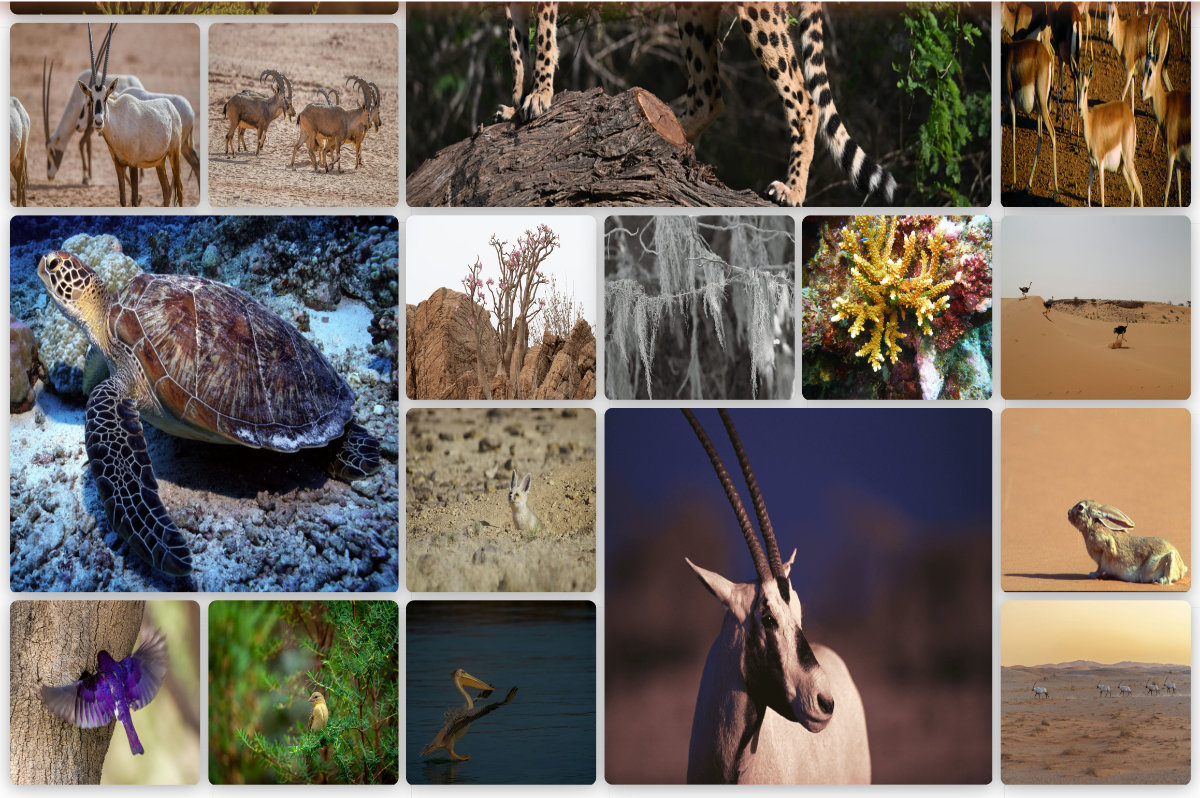
The Saudi Green Initiative, launched by Crown Prince Mohammed bin Salman in 2021 under the Vision 2030 framework, aims to tackle threats to this rich biodiversity and foster sustainable development.
Key goals include transitioning to a sustainable economy by reducing carbon emissions, boosting renewable energy production, and bolstering conservation efforts.
Additionally, the initiative aims to enhance environmental protection, promote green technologies, and create green jobs to drive economic diversification and growth.

Saudi fund signs two loan agreements, inaugurates Hulhumale Island development in Maldives

- Al-Marshad participated in the partial inauguration of the Hulhulmale Island Development Project
MALE: CEO of the Saudi Fund for Development Sultan bin Abdulrahman Al-Marshad signed on Friday two development loan agreements with the Maldives’ Minister of Finance Dr. Mohammed Shafiq. These agreements will contribute to financing the Velana International Airport development project with a value of $100 million and the healthcare sector development project in the Maldives with a value of $50 million, provided by fund.
Additionally, Al-Marshad participated in the partial inauguration of the Hulhulmale Island Development Project, which the SFD is contributing to financing through a soft development loan worth $80 million. The event was also attended by Saudi Ambassador to the Maldives Matrek bin Abdullah Al-Ajalin.
King Salman issues royal order to promote 26 judges

RIYADH: King Salman issued a royal order on Friday to promote 26 judges at the Board of Grievances, Saudi Press Agency reported.
President of the Board of Grievances and Administrative Judicial Council Sheikh Khalid bin Mohammed Al-Yousef said that the royal order confirmed the keenness of the Kingdom’s leadership to support the judiciary to develop its performance and achieve quality and efficiency.
Earlier this month, the king issued a royal decree on Saturday to appoint 261 investigative lieutenants at the Ministry of Justice’s Public Prosecution.
Makkah workshop focuses on geospatial data

- Several distinguished surveyors were also honored for their outstanding performance in recent training sessions
MAKKAH: “The Future of Geospatial Information Using Artificial Intelligence Techniques” was the title of a workshop hosted at the Makkah municipality theater recently.
Held by the Kingdom’s Geographic Information Systems section, the event included a presentation that highlighted the project’s services and achievements, along with its aims of enhancing land inventory and documentation efficiency in Makkah.
It also reviewed the use of artificial intelligence in information analysis and problem-solving. Several distinguished surveyors were also honored for their outstanding performance in recent training sessions.
Saudi Islamic affairs minister inaugurates mosques

- Dr. Abdullatif Al-Asheikh said: “Contributing to building and caring for mosques is a good deed that earns people rewards”
ARAR: Saudi Minister of Islamic Affairs, Dawah and Guidance Dr. Abdullatif Al-Asheikh inaugurated the Al-Hanouf Al-Zwain and Ali Mohammed Al-Melhem mosques in the city of Arar as part of a visit to the area to inspect work progress.
The ministry’s undersecretaries and several department directors, as well as the director of the ministry’s branch in the Northern Borders region, Fahd bin Sulaiman Al-Khalifa, attended the event.
Al-Asheikh toured the two mosques, and was briefed on their construction in the Salmani architectural style, as well as their associated facilities and services.
He said: “Contributing to building and caring for mosques is a good deed that earns people rewards.”
The minister added that the Kingdom, since the era of King Abdulaziz until today under King Salman and Crown Prince Mohammed bin Salman, has given great importance to mosques.
Al-Asheikh prayed for the reward of those who built the mosques, and for the maintenance of Saudi Arabia’s security and stability.



